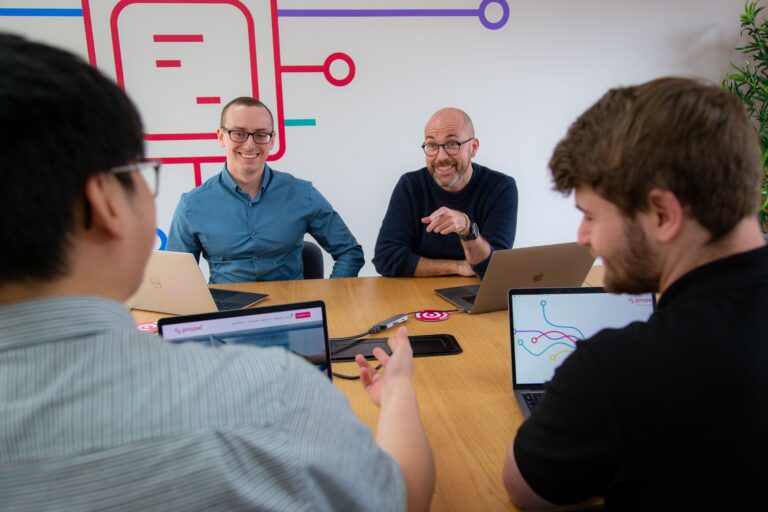Leadership team agility stems from a combination of confidence, connection, and the capacity to alter perspectives, enabling them to effectively unify, make, and execute courageous decisions. Self-doubting or poorly connected leadership teams can become stuck in ‘no-mans-land’ unable to tackle challenges constructively and concisely. A prime example is responding to the demand for integrated, new ways of working, introduced in response to Covid-19, and remerging due to cost of living increases.
Today, organisations are transitioning; a brave few have ‘flicked the switch’ to full time in the office, while many are taking a gradual and flexible ‘dial-up’ approach. The litmus test is loyalty. Many leadership teams are asking themselves, “if we flick the switch or accelerate the dial-up, will we loose our people?” We know in a ‘post-pandemic’ era Millennials and Gen-Z in particular are more likely to challenge the leadership line through peripatetic behaviour, simply moving to a place more aligned to their desirable lifestyle goals. This example highlights the need for leadership teams to be confident in their decision making. Such confidence needs to be tenanted in authentic vertical connection and clarion communication, i.e. communication that resonates at a personal and organisation level because it connects with the vision of the organisation and inspires the individual.
The ability to exercise confidence, connection, and communicate with impact is a journey many leadership teams are grappling with. Leading with this level of confidence requires a degree of honest self-reflection; why will our people want to remain working with us? And, what do we offer as leaders that warrants calling people into the workplace?
Leadership confidence in decision making needs to be rooted in clear organisational purpose and vision. The vision informs what is needed to obtain the best results, including how much inter-person collaboration do we need to fulfil our purpose, and how best is that achieved? Linking blended working clearly to vision will boost confidence in the leadership creating a strong sense of organisational purpose. However, a deeper connection is required to create loyalty with the Millennials and Gen-Z.
Deeper connection requires a leadership team to know the people it is serving, understanding the deeply human and important ‘need themes’ below the surface of the organisation. Leaders who explore what is motivating or concerning these generations will interact more authentically and cast the ‘leadership shadow’ which inspires followership. In doing so, they will be the team to follow and get behind, and will be able identify where to strengthen the resilience associated with followership throughout the organisation.
For example, there are multiple new challenges underpinning the demand for blended working. The working day relationship mix has shifted for many as connections have developed with ageing parents, children, or neighbours, while working from home. Many people have come to value these relationships and their local community more highly, competing with the need to be in the office; the new leadership vision needs to acknowledge this. Acknowledging these dimensions requires authentic connection, and emotional literacy, demonstrating the leadership team are in-touch. Without it, it can feel like a leadership team isn’t in touch, or doesn’t care.
So engaging colleague’s views holistically, will also integrate the diverse perspectives of key stakeholders including customers, and creates horizontal and vertical connections. Comprehensive connection identifies the needs to take into account and the changes required to build strong loyalty and the resilience which sustains any future disruptions.
Helping employees and customers connect deeply with the organisation’s purpose, is the responsibility of the leadership team. Employees and customers need to connect with the vision personally and see the benefits for them to alter their perspectives and buy into the changes. Emotional engagement and literacy, evoking a positive vision, which creates loyalty also builds leadership connection and confidence. For most leadership teams, leading with connected confidence requires focused time and attention, learning to lead differently, and more effectively.
Many leadership teams are tired or fatigued, wondering where the next disruption might be coming from and what it might bring. Responding to challenges such as blended working, or those on the horizon, like the cost of living crisis, requires a new leadership agility established in confidence, connection and clarity, earning the ‘right to lead’. Now more than ever, achieving this means leadership teams need to engage in meaningful reflection, build authentic connection within the team and with employees, and understand and acknowledge their position and values. With this, leadership teams will have what it takes to lead their organisation into the next chapter of its journey, and be successfully equipped to tackle tomorrow’s challenges.









